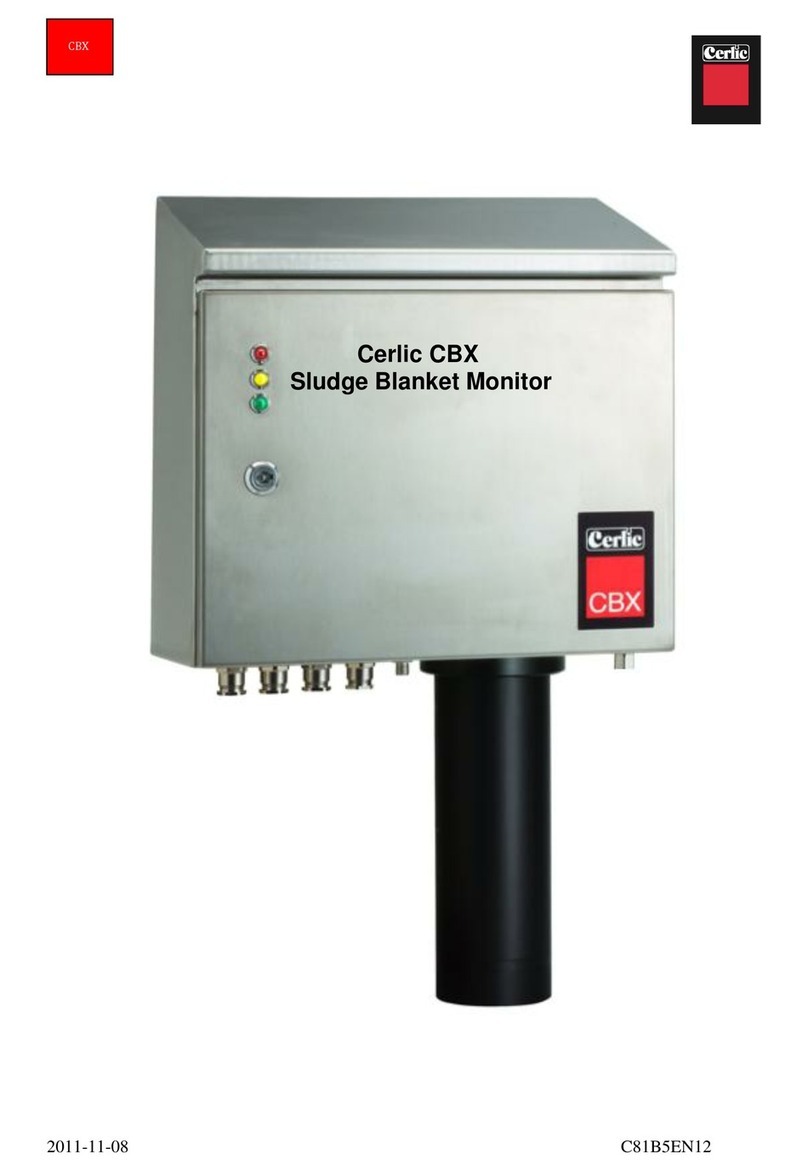
-10 -
10. Menu for O2X Transmitter
Use or to select the sensor in the main display. The menu for the selected sensor
is accessed by pressing ENTER for five seconds. If the selected sensor is not active (the
text No transmitteris shown) a warning is displayed that asks you to make another
choice in order to show the sensor menu.
Settings
I-Time Integration time or dampening -can be set up to 999 seconds
Decimals 1 or 2 for display and menu
Alarm Relay ”-” ”#1”, ”#2”, or ”#1 and #2”. Check that the relay is not being
used for cleaning
Analog ”None”, ”Channel 1”, ”Channel 2”, or ”Both”. Pick which analog
output contacts are to be used with sensor. If “Both” is chosen,
channel 1 will give the dissolved oxygen according to the
sensors selected scale, channel 2 will give the temperature
scaled 0-100 degrees C. The temperature is to be seen as
additional information, not a primary measurement.
Cleaning Press ENTER to go to Cleaning program
Cleaner ”None”, ”Flush”, or ”Brush”. Do not select “Brush” since this
does not exist for O2X sensor
Interval min 0-999 minutes, time between cleaning cycles
Length sec 0-999 seconds, duration of flushing cycle
Freeze sec 0-999 seconds, time the output signal shall be frozen after
flushing
Relay ”-”, ”#1”, or ”#2”. Select relay to operate solenoid for flush cycle.
These are the same relays used for “Alarm relay” above
Next time The next scheduled cleaning time. Pushing “Enter” on this line
will set the time to current time and start a cleaning cycle. This
could be used to test the “Flush” cycle.
Calibrate
Airpres.mBar Specify within 10 mBar
Calibrate ”No”, ”Zero”, or ”Air”. Select what calibration to do.
Temp (info) Shows actual temperature in the electrode
Test (info) Shows actual dissolved oxygen level
Setvalue Calculated with air pressure and transmitter temp; shall be the
same as “test” immediately after the calibration






























